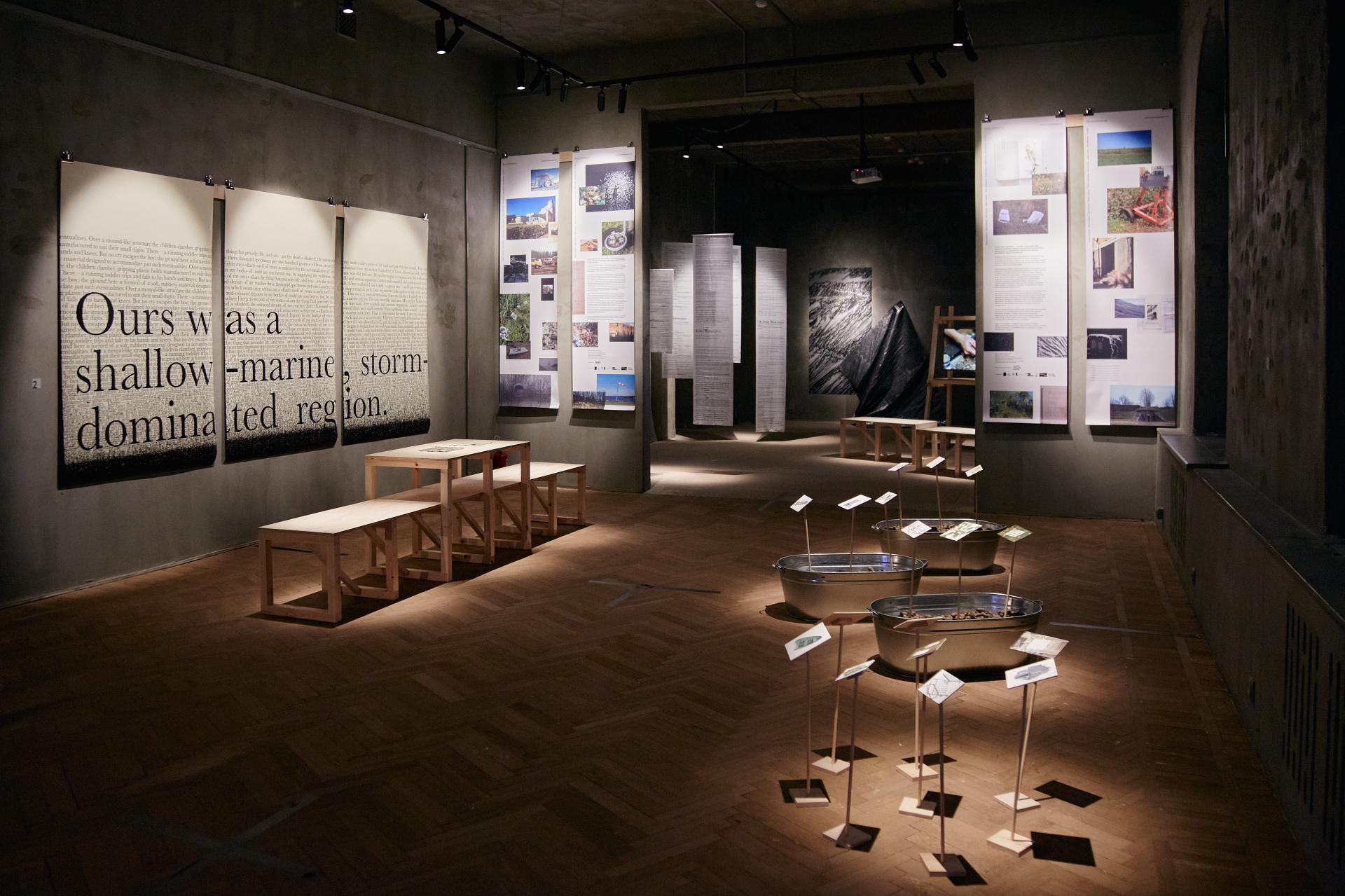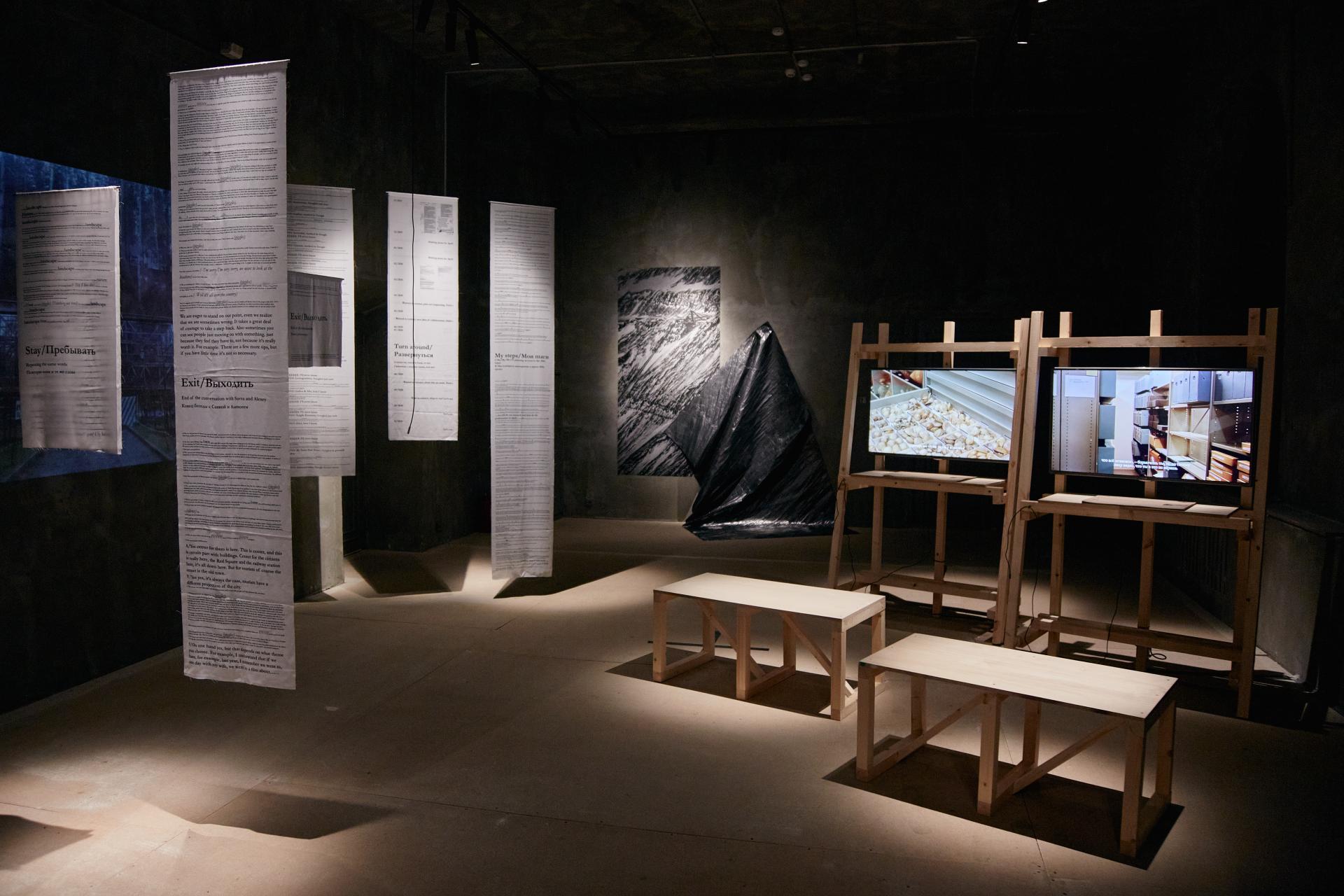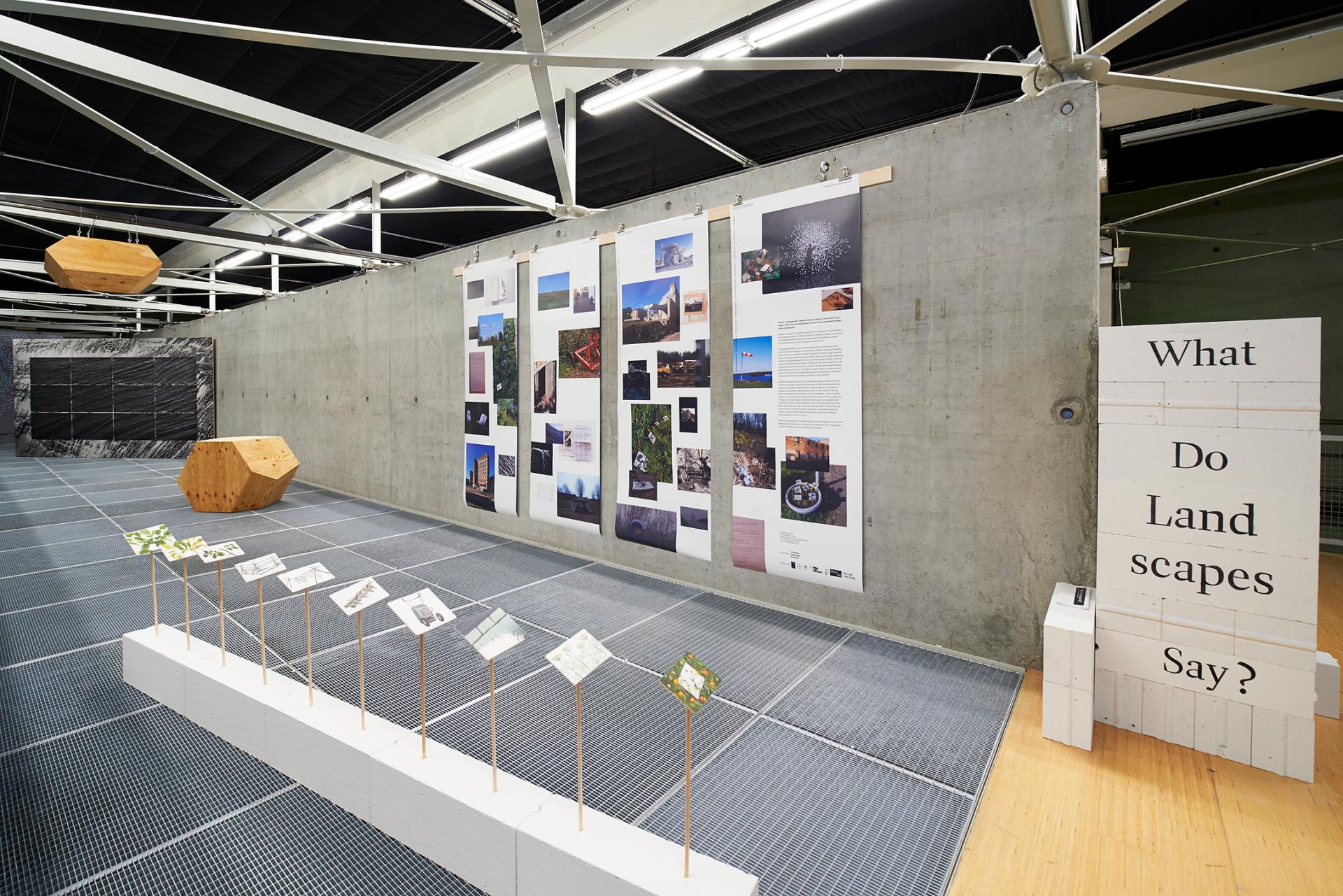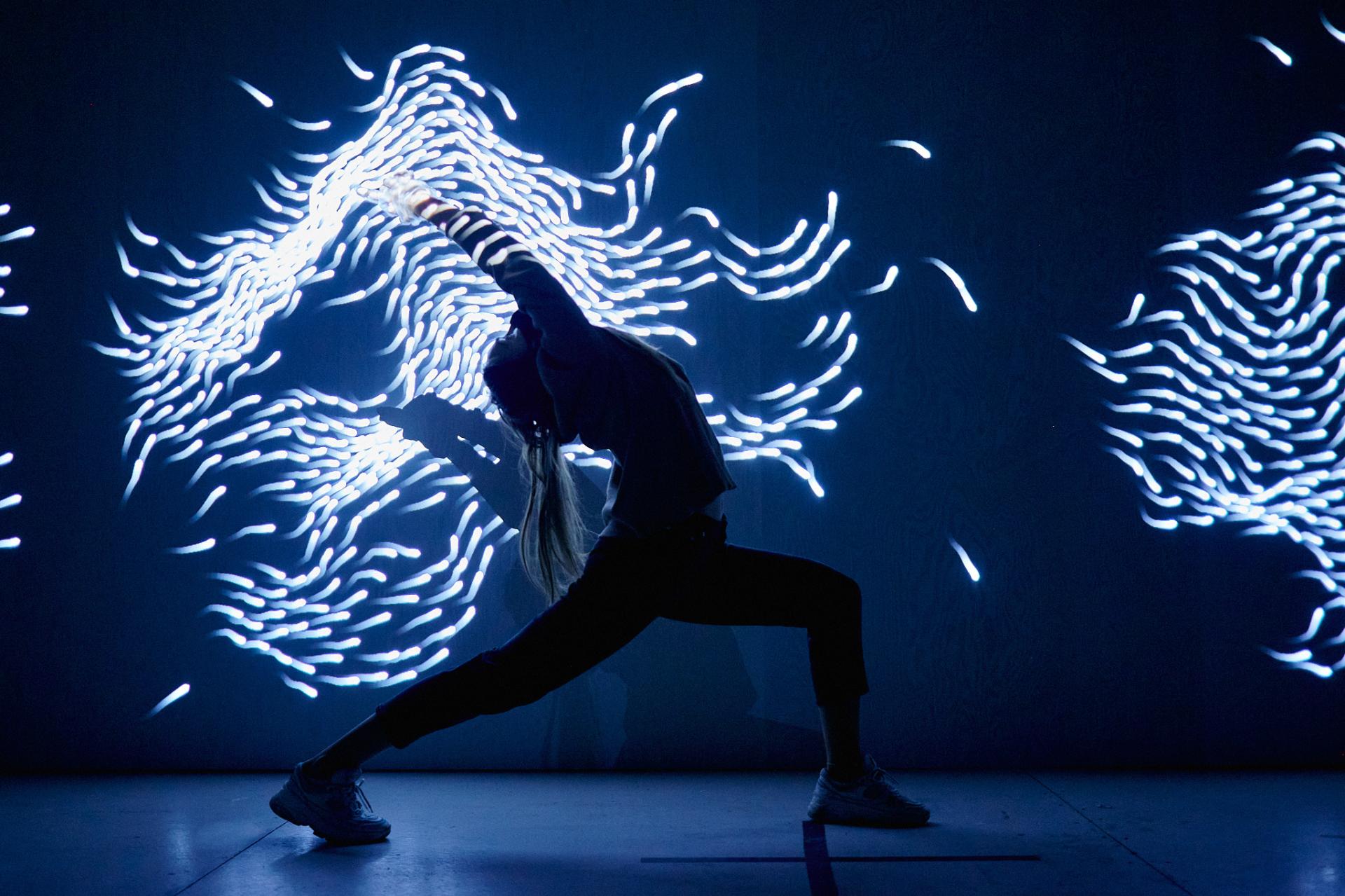What Do Landscapes Say?
Basic information
Project Title
Full project title
Category
Project Description
'What Do Landscapes Say?' explores how artistic narratives can provide a starting point to engage multiple voices in archiving and narrating the human-landscape relationship and inform more inclusive urban development. The research is a cross-disciplinary collaboration of nine architects, artists, illustrators, designers, urbanists, and writers based in the Netherlands, Russia and the UK. Their works are shared in the Netherlands and Russia via two exhibitions and a seminar with guest speakers.
Project Region
EU Programme or fund
Which funds
Other Funds
Creative Industries Fund NL, programme Internationalization, Open Call Turkey, Russia, Egypt, Morocco #2. The grant was provided for 3 phases from 03/2019 to 04/2021, from the start to the implementation of this project. Support from the Fund for this project is part of a four-year programme within the policy framework of the International Culture Policy 2017-2020 with funding from the Dutch Ministry of Foreign Affairs, entitled ‘Sustainable and inclusive cities through design’. Pivotal to the programme is the role and deployment of design (and design thinking) in questioning and proposing solutions for the consequences of rapid urbanization and the associated societal themes.
Future Architecture Platform 2021 fellow. A writing grant is to the Nomaos collective awarded by the platform member DPR-Barcelona. With this writing grant, the collective is editing a book originally titled “Landscapes of Care”, critically reflecting on the nature of Future Architecture’s cultural projects and the work of emergent creatives from the 2021 Future Architecture Open Call.
Description of the project
Summary
How can artistic and critical narratives inform more inclusive and sustainable understanding of landscapes for urban development in the peripheries? Can diverse narratives provide a starting point to engage multiple voices in archiving and narrating the human-landscape relationship?
Nomaos research collective is a cross-disciplinary group of nine architects, artists, illustrators, designers, urbanists and writers based in the Netherlands, Russia and the UK. Since 2019, through their project 'What Do Landscapes Say?’, they sought out encounters with various peripheral and periperialised places in Russia and the Netherlands. Nomaos questioned the perceptions and public structures for urban-rural division through nine place-based narratives via diverse media and collectively pleaded for methodological innovation in archiving and narrating landscapes. To further problematise these questions and pleas outside of the confined space of the exhibition, in the following phase, Nomaos invited eight speakers to join a discussion about narratives as a way to acquire and transmute knowledge about the human-landscape relationship. By telling more details of cross-territorial and cross-disciplinary practices, ‘What Do Landscapes Say?’ advocates for more collective attempts to transfer the methods of archiving and narrating landscapes into territorial design and planning discourse.
The project ‘What Do Landscapes Say?’ is made possible by Creative Industries Fund NL, exhibited in Het Nieuwe Instituut Rotterdam and Na Peschanoy Gallery Moscow in 2020. A seminar was co-hosted with Het Nieuwe Instituut Rotterdam and Moscow Architecture School MARCH in 2021. Nomaos collective is a 2021 fellow of Future Architecture Platform.
Key objectives for sustainability
The main motivation and problem statement of this project build on questioning the exploitative and human-centered practice on the landscapes. The way we approach the landscape trickles down into the development of the cities we inhabit, the industries we work in, and the societies in which we live. With rapid urbanization and an increasingly abstract understanding of globalization, our surrounding living environment gradually ceased to be a hinterland of our daily experience. This disrupted human-landscape relationship contributes significantly to the gap between policies and individual lifestyles toward sustainability. While design can create accessible and affordable solutions in most occasions, the barrier often lies in personal connection and motivation.
The nine sub-projects under the framework take customized reading into sustainability, according to the local contexts, and provide an integrated understanding of environmental and social sustainability.
For example, towards the environmental side, Netherlands-based American artist Rachel Bacon shows a large-scale graphite drawing that contrasts the slowness of geological time with fast economic exploitation of a diamond mine in Mirny, Yakutsk; Russian audio-visual artist Nataly Lakhtina built a multi-media installation in which the visitor becomes part of the environment through interaction, describing the landscape of Kizhi using data, algorithms, visual cues, noises, and sounds.
To the social side, Illustrator Ksenia Kopalova from Moscow is interested in how people generate a feeling of belonging through their everyday practices, her illustrations of garden structures explore the identities of different types of Russian gardens; Chinese urbanist and artist Yue Mao asks in her visit to Vyborg if it is possible to really get to know an environment, the people and their identity by visiting and documenting the place through film and interviews.
Key objectives for aesthetics and quality
‘What Do Landscapes Say?’ explores the ways in which art and critical artistic research might inform the development of diverse urban environments through looking at landscapes. With a cross-disciplinary team of artists and researchers working with diverse artistic forms, the project collects the outcomes of diverse methods of research through the many ways in which we tell stories. The stories were told in hybrid forms of large-scale drawings, physical installations, audio-visual installations, workbooks and storybooks, and prints on various materials. While drawings and illustrations trace a personal journey, multi-media installations invite the viewer into the experience of the landscape. It is through these media and everything in-between we get to know the landscape as told through many different perspectives.
The different lenses of artistic forms function more than merely a natural choice from the team’s expertise, but through multi-sensory activation of how the visitors’ can experience landscapes, in itself manifests a more multifaceted understanding of landscapes through diverse perspectives. Each work invites the visitors to take a look at the presented landscape in a specific way that is suggested by the work itself, while the curated route and experience of the exhibitions endeavors to challenge the visitors to emerge and interact with the landscapes, instead of being solely viewers and bystanders.
The art of noticing and reflecting relevant details outside common frameworks of landscapes can become a valuable resource in learning something about diversity. Through various media, the project probes questions such as: Do the designs of specific public structures reinforce the socio-economic divide between large cities and the periphery? In what ways are 'natural' landscapes re-arranged to represent a certain identity?
Key objectives for inclusion
The research locations of nine sub-projects under this project preliminarily look at peripheral and disadvantaged areas in Russia, which are overlooked and/or damaged from the utilitarian approach of urban planning nowadays, often causing both environmental and social consequences. The locations include rural and urban landscapes in Karelia, industrial areas in Yakutsk and Moscow Region, and natural reserves in Kaliningrad. The research process of each sub-project deeply involves communication with local communities, often disadvantaged ones.
The core team consists of nine international and cross-disciplinary members: urbanist Yue Mao (CN/NL), architect Polina Veidenbakh (RU), curator and artist Naomi van Dijck (NL/UK), illustrator Ksenia Kopalova (RU), audio-visual artist Nataly Lakhtina (RU), UI/UX designer Maria Malkova (RU), writer Radha Smith (TW/UK), visual artists visual artist Rachel Bacon (US/NL) and Vera Mennens (NL). In their individual practices, they navigate disciplines as divergent as geology and sociology, mathematics and history, while the encounter with landscapes is teh ground of collaboration. The collaboration is on an equal basis between the European-based and Russian team through co-curating processes.
In the third phase of the project, the collective attempted to expand the discourse with more cross-territorial and cross-disciplinary practices. Therefore, diverse external speakers were invited to the seminar, including architectural critic and publisher DPR-Barcelona (ES), artist Wapke Feenstra (NL), architect Daria Zaitseva (RU), cultural analysis scholar Prof. Dr. Esther Peeren (NL), earth eater and earth lover masharu (RU/NL), artist Anastasya Kizilova (RU), researcher Chiara Dorbolò and Daphne Bakker from architectural critic platform Failed Architecture (NL).
With activities hosted in both the Netherlands and Russia, the knowledge of this project is made accessible for both countries and beyond, through online channels.
Results in relation to category
With funding from Creative Industries Fund NL, the project successfully finalized all three phases of the grant scheme. During the first phase until 06/2019, a collective research trip in Russia was organized. In the second phase until 10/2020, team members developed individual research and artworks. The collection of nine works were exhibited in Het Nieuwe Instituut (National Agency of Architecture, Design and Digital Culture) in the Netherlands, and Na Peschanoy Gallery in Moscow, Russia. The exhibitions were in physical forms, while the activities took hybrid forms online and offline. Estimated visitors to the exhibitions were around 5k, which was largely affected by the pandemic. For the third phase until 04/2021, the Seminar ‘What Do Landscape Say?: Telling Details of Cross-Territorial Practice’ was organized online, co-hosted by Het Nieuwe Instituut and Moscow Architecture School MARCH. The two-day seminar reached 4.3k views on Facebook. Eight research essays were produced by the collective members to reflect on their sub-projects and the overall scope.
The project is well-received internationally. Its cross-disciplinary nature attracts professionals from various disciplines. In Russia, the connection between environmental and social sustainability drawn by this project is considered very valuable. In the Netherlands, professional audiences are impressed by the methodological innovation and the dynamic international collaboration. The general public in the Netherlands responded that this project provides them with fresh perspectives from Euro-centric stereotypes of Russian landscapes and cultures, while the interactive elements are well-received by both sides.
In 2021, the collective was selected as a fellow of the EU-Funded Future Architecture Platform. With a writing grant from the platform member DPR-Barcelona, the collective is editing a book critically reflecting on Future Architecture’s cultural work, which will be published on 10/2021.
How Citizens benefit
The research processes of all sub-projects involve close interaction with the local communities. For example, in Vyborg, two collective members were planning to initiate a cultural festival on local social histories, to stimulate the pride in the citizens in the decaying city. Local cultural institutes and governmental departments were supportive of the initiative, and several civil activists were involved in the co-creation. One sub-project on rural landscapes in Karelia did not look into the widely-published rural landscapes on Kizhi Island, but also the neglected villages in the surroundings and the actual living conditions of the villagers. Another sub-project conducted a survey on the citizens’ personal connection with local landscape elements in Saint Petersburg region, which were considered refreshing by the interviewees. All sub-projects were supported by local archives and other cultural institutions. With half of the team from Russia, contact with local residents was usually friendly and fruitful.
However, as a reflection of an international project implemented in Russia, the engagement with local communities does not guarantee a successful or tangible impact on the communities. In one sub-project, the artist is traveling to the mining town Mirny in Yakutsk. While the local residents are well aware of the ecological crisis the mining is causing, the western artist is not entitled to comment on the locals’ financial dependence on the mining industry. Therefore, in some cases, the impact is rather reversed on the artists and designers to reflect on their positions in these attempted interventions. As a speculative design project, the collective considers themselves more as a soft agency to encourage conversation, stimulate reflection and mobilize participation, rather than directly interfering and implementing solutions. At the end of the day, the outsiders actually learn more from the local communities.
Innovative character
It is often a critical question regarding the ‘use’ of art and culture in urban planning and the position of knowledge from the communities. As much as communicative and participatory urban planning and design are promoted in the professional world and in practice, inter-subjective and informal knowledge is often instrumentalized as merely some materials ‘included’ in the research process, after the ‘research’ phase, design and planning often, actively or passively, go for the approaches which are coined by and inherited from existing policies and/or the market. Another phase where narratives appear in urban design and planning may be the end phase, to showcase the scenarios built on the designed visions. To question the instrumentalization of narratives, this project takes narratives as not a tool, but a critical action of design. At the end of the day, what we design comes down to our experience, not only upon the ‘implementation’ of design but stretches throughout the time before and after design.
Another innovation of this project is to suggest new methodologies in archiving and narrating landscapes. On the contrary of narrowing down the scope and concluding from the nine sub-projects into one framework, the collective chose to further complicate the issue via curating a seminar to expose more artistic and cultural practices on landscapes. This approach responds to several theories regarding the hyper-global x hyper-local ecosystems nowadays, for example, ‘contaminated diversity’ by Anna Tsing and ‘architectural archipelago’ by Pier Vittorio Aureli. To challenge the generalized framework of inclusion and diversity, a spiral process of research and creation, practicing and theorizing is explored. Responding to different policy schemes during the project, for example, the Dutch International Cultural Policy and Creative Europe Programme, the team also actively navigates different political and public languages of this project outside of the artistic scenes.




